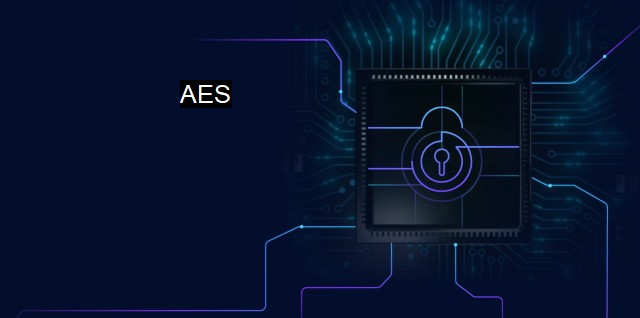What is AES?
AES Encryption: The De Facto Standard for Secure Digital Data Protection and Validation
The Advanced Encryption Standard, commonly referred to as AES, is an encryption algorithm implemented in digital cryptography to protect confidential information or sensitive data from unauthorized individuals or entities. Being a specification for encryption, it belongs to a broader subject area of cybersecurity, specializing in the field of information security. A derivative postulation of cryptographic analysis and protocol, both adopted for safeguarding ensnared assets of directives, regulations, or policies, AES was formulated to guard protected information from being spruced or slightly modified.The National Institute of Standards and Technology (NIST), a unit of the United States Department of Commerce, recommended the adoption of AES in 2001 to replace the aging Data Encryption Standard (DES). The most significant difference between both is that AES makes for a more secure data encryption model that possesses great mathematical properties and shifts of suites that make it tamper-proof to data invasion that compromises the security of information. Thus, responding to the safety inadequacies of DES while significantly improving data confidentiality.
AES uses a symmetric key, which means the same key is used for both the processes encryption and decryption, applicable in block cipher techniques. This encryption method divides the information to be encrypted into fixed sizes called blocks, usually 128 bits long. For this form of encryption to be successful, it uses additional keys, 128, 192, and 256 bits long. Consequently, this secure technique defeats common hacking practices such as brute force attacks, which attempt to try out different key combinations to break an encrypted message.
AES encryption is an involved protocol with extensive computations that pass through different stages, including substitution, permutation, and combination for each bit of data processed in the encryption or decryption process. It has commands such as SubBytes, ShiftRows, MixColumns, and AddRoundKey functions, each responsible for scrambling the data bits and making them highly secure against cryptographic attacks.
One key use of AES encryption is the protection of the privacy and security of sensitive being transmitted over the internet. Which would help facilitate secured conversations, even in compromised environments. many antivirus software packages utilize AES encryption for data protection delivered through firewall applications.
AES technology is being increasingly used in the Internet of Things (IoT) devices, digital security systems, and even high-speed telecommunications and network systems. It provides a highly compact and efficient solution, making it both cost-effective and quick in performance.
Understandably, with massive amounts of data being transferred and stored online daily, AES encryption takes on a vital role, which substantially intensifies society's digital security posture. In combination with computer sciences, network security, and digital forensics sub-verticals, it serves a necessary purpose in protecting sensitive digital assets and communication channels from emerging threats.
The AES encryption process is crucial in modern cybersecurity, representing an indispensable tool in digital technology and internet infrastructure. Already integrated into various systems globally, the AES is more and more becoming a universally accepted standard. Despite a few limitations, such as complex configuration processes, AES boasts of immense strengths, such as high security and computational speed, its successful cryptographic resistance, adaptability, and usage convenience informed by consistent algorithmic analysis, audits, and improvements.

AES FAQs
What is AES encryption?
AES encryption (Advanced Encryption Standard) is a widely-used method of encrypting data to ensure its confidentiality and integrity. It is a symmetric encryption algorithm which means that the same key is used to both encrypt and decrypt the data.How does AES encryption work?
AES encryption works by breaking the data into blocks and applying a series of mathematical functions to the plaintext to produce ciphertext. The key used to encrypt the data is also used to decrypt the data, so it is important to keep the key secure.Is AES encryption secure?
Yes, AES encryption is considered to be one of the most secure encryption algorithms currently available. It is widely adopted by government agencies and financial institutions to protect sensitive data. However, like any encryption algorithm, it is only as secure as the key used to encrypt the data.How does AES encryption relate to antivirus software?
Antivirus software uses various techniques to detect and remove malware from a computer, including scanning for suspicious files and behavior patterns. AES encryption can be used to encrypt malware to make it difficult to detect and analyze. Antivirus software must be able to decrypt the malware to detect and remove it, which can sometimes be challenging.Related Topics
Advanced Encryption Standard (AES) Symmetric Encryption Data Encryption Standard (DES) Encryption Algorithms Cryptographic Protocols
| | A | | | B | | | C | | | D | | | E | | | F | | | G | | | H | | | I | | | J | | | K | | | L | | | M | |
| | N | | | O | | | P | | | Q | | | R | | | S | | | T | | | U | | | V | | | W | | | X | | | Y | | | Z | |
| | 1 | | | 2 | | | 3 | | | 4 | | | 7 | | | 8 | | |||||||